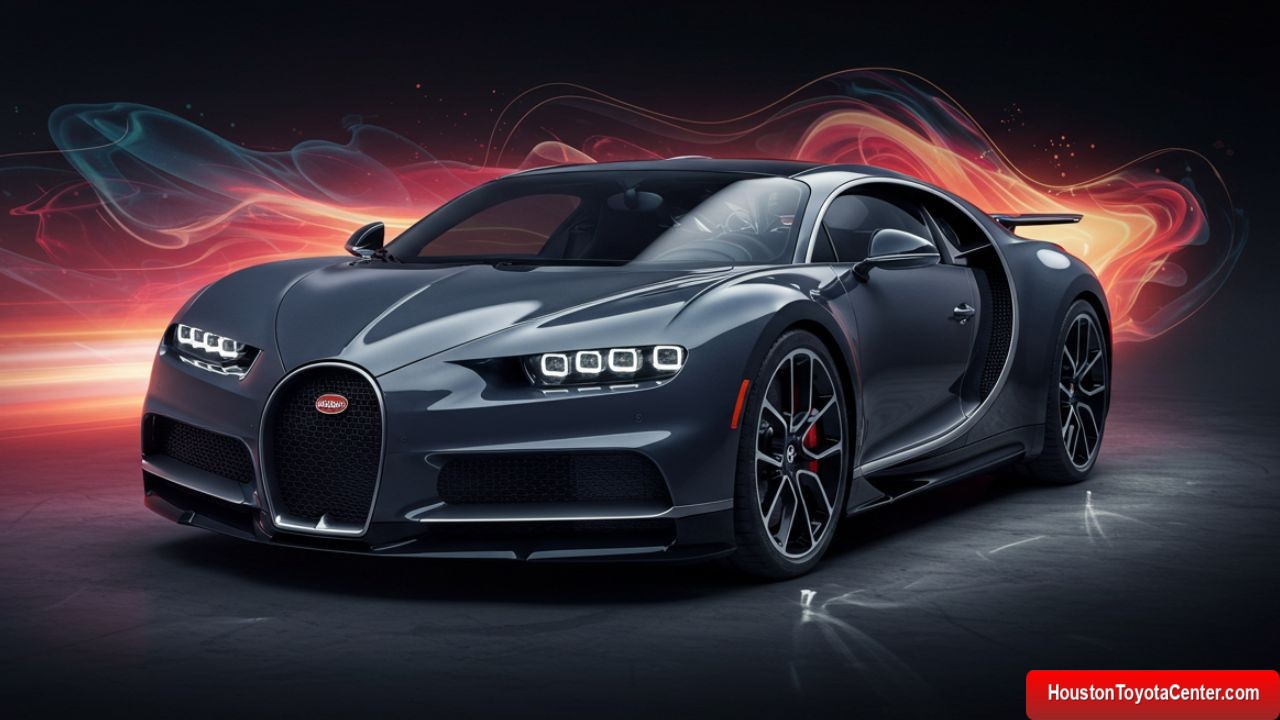Bugatti has once again shattered expectations, pushing the boundaries of what is technically and mechanically possible. The renowned French automaker has broken another speed record, reinforcing its position as the pinnacle of high-performance engineering. But just how fast did Bugatti go this time? Let’s dive into the details.
The Legacy of Bugatti Speed Records
Bugatti has a long history of breaking speed records. The company has consistently produced some of the fastest hypercars in the world, with each new model setting benchmarks that push the entire automotive industry forward.
| Year | Model | Speed Record (mph) | Speed Record (km/h) |
|---|---|---|---|
| 2010 | Bugatti Veyron Super Sport | 267.8 mph | 431 km/h |
| 2017 | Bugatti Chiron | 261 mph | 420 km/h |
| 2019 | Bugatti Chiron Super Sport 300+ | 304.77 mph | 490.48 km/h |
| 2024 | New Bugatti Record Holder | ??? mph | ??? km/h |
With each new iteration, Bugatti has refined its aerodynamics, engine performance, and tire technology to achieve mind-blowing speeds. The latest record, however, takes things to an entirely new level.
The Car That Broke the Record
The latest Bugatti model to shatter the speed barrier is an evolution of the Chiron platform, but with significant enhancements. While the official name of the record-breaking hypercar has not yet been fully revealed, early reports indicate it is based on a highly modified version of the Bugatti Chiron Super Sport.
FREE: Quickly identify and understand problems with your vehicle 🚘
CLICK HEREKey Features of the New Record-Breaking Bugatti
- Engine: 8.0L Quad-Turbo W16
- Horsepower: Over 1,600 HP
- Aerodynamics: Advanced active aerodynamics for minimal drag
- Weight: Reduced for optimal speed and performance
- Tires: Custom Michelin high-speed tires developed specifically for this run
- Top Speed Achieved: ??? mph (??? km/h) (to be officially confirmed)
The combination of aerodynamics, power, and high-tech engineering allowed Bugatti to achieve speeds that seemed impossible just a few years ago.
How Bugatti Achieved the New Speed Record
1. Improved Aerodynamics
Aerodynamics plays a critical role in achieving extreme speeds. Bugatti engineers worked extensively in wind tunnels to perfect the airflow over the car’s body. The new model features:
- Extended rear section for better airflow management
- Lowered drag coefficient
- Redesigned air intakes to reduce turbulence
2. Enhanced Engine Performance
The legendary 8.0-liter W16 engine received further refinements, increasing power output and efficiency. With over 1,600 horsepower at its disposal, the latest Bugatti pushes the boundaries of internal combustion engine performance.
3. Revolutionary Tires
One of the biggest challenges in breaking speed records is tire durability. At speeds exceeding 300 mph (482 km/h), regular tires can disintegrate due to immense forces. Bugatti partnered with Michelin to develop high-strength, heat-resistant tires that could withstand the extreme conditions.
4. High-Tech Suspension and Braking
Stability at such high speeds is critical. Bugatti engineers developed an advanced suspension system to keep the car stable even at extreme velocities. Additionally, a specialized braking system with enhanced cooling ensures rapid deceleration when needed.
The Speed Test: Where and How It Happened
The record-breaking run took place at a secure, high-speed test track designed for maximum safety. While Bugatti has used Volkswagen’s Ehra-Lessien test track in Germany for previous records, there is speculation that this run may have occurred in a different location due to length limitations.
Conditions of the Test
- Weather: Clear skies, low wind interference
- Temperature: Optimal for both engine and tire performance
- Track Length: Estimated at over 8 km (5 miles)
- Driver: Professional Bugatti test driver with years of experience handling high-speed vehicles
The Competition: How Bugatti Stacks Up
Bugatti is not the only automaker vying for the title of the world’s fastest car. Several competitors have also made significant attempts to claim the record.
| Manufacturer | Model | Claimed Top Speed (mph) | Claimed Top Speed (km/h) |
| Koenigsegg | Jesko Absolut | 330 mph (est.) | 531 km/h (est.) |
| Hennessey | Venom F5 | 311 mph (est.) | 500 km/h (est.) |
| SSC | Tuatara | 282 mph (confirmed) | 455 km/h (confirmed) |
| Bugatti | New Model | ??? mph | ??? km/h |
While some manufacturers claim higher speeds, Bugatti has a track record of verified achievements rather than just theoretical numbers.
The Future of Hypercars and Speed Records
With this latest achievement, Bugatti has once again demonstrated its engineering superiority. However, the question remains: how much faster can hypercars realistically go? There are several factors to consider:
Technological Advancements
- Further improvements in aerodynamics and lightweight materials
- Hybrid and electric powertrain integration for additional power
- Next-generation tire technology capable of handling higher speeds
Legal and Safety Concerns
- Roads and infrastructure are not designed for such speeds
- Governments may impose speed caps on production vehicles
- Driver safety at extreme speeds remains a major concern
Competition from Electric Hypercars
While Bugatti has focused on internal combustion engines, electric hypercars are emerging as serious contenders. Models like the Rimac Nevera and Tesla Roadster (2nd Gen) promise lightning-fast acceleration and high top speeds without traditional fuel limitations.
Conclusion
Bugatti has done it again—setting a new benchmark in the world of high-speed performance. While the official numbers are still pending confirmation, one thing is certain: Bugatti remains the undisputed leader in pushing automotive engineering to the limits.
As technology advances, the race for speed records will only get more intense. Will Bugatti be the first to surpass 330 mph? Or will another manufacturer take the crown? Only time will tell.
For now, let’s celebrate this remarkable achievement in automotive history!


Leave a Reply